"If
California Celebrates Native American
Heritage with New Laws Addressing Violence, Hate and Social Supports
(CBM) – As Native Americans celebrated 100 years of citizenship and the right to vote at the State Capitol, Gov. Gavin Newsom signed a proclamation declaring Native American Day and signed several bills aimed at pushing tribal priorities forward.
The package of bills, which includes policies to enhance laws for vulnerable Native American youth and increase access to social supports, was signed on Sept. 27, while hundreds of people attended the event commemorating the 57th annual California Native American Day.
“I’m proud of the progress California has made to reckon with the dark chapters of our past, and we’re committed to continuing this important work to promote equity, inclusion, and accountability for Native peoples,” Newsom stated. “As we celebrate the many tribal communities in California today, we recommit to working with tribal partners to better address their unique needs and strengthen California for all.” Newsom signed seven tribalrelated bills introduced by Assemblymember James C. Ramos (D-San Bernardino), including Assembly Bill (AB) 2695, which helps California track trends in domestic violence and collect accurate information concerning violence in tribal lands. AB 2695 will require the California Department of Justice (DOJ) to align its records and data with the National Incident-Based Reporting System (NIBRS) to assist law enforcement agencies and other entities with identifying where incidents related to Missing and Murdered Indigenous People (MMIP) are taking place.
In addition, the bill requires law enforcement to document whether domestic violence incidents took place in Indian Country.
Ramos is the first Native American elected to the California legislature and the chair of the California Legislative Native American Caucus (CLNAC).
“This measure will help California deal with the lack of clear data about MMIP and where domestic violence occurs,” stated Ramos, a member of the SerranoCahuilla tribe. “That information will better inform us about how to deal with this issue as California ranks fifth in the nation in MMIP unresolved cases.”
According to Ramos’ office, “the National Institute of Justice 2016 report discovered that 84% of American Indian/Alaska Native women (1.5 million people) experience violence in their lifetimes, 67% feared for

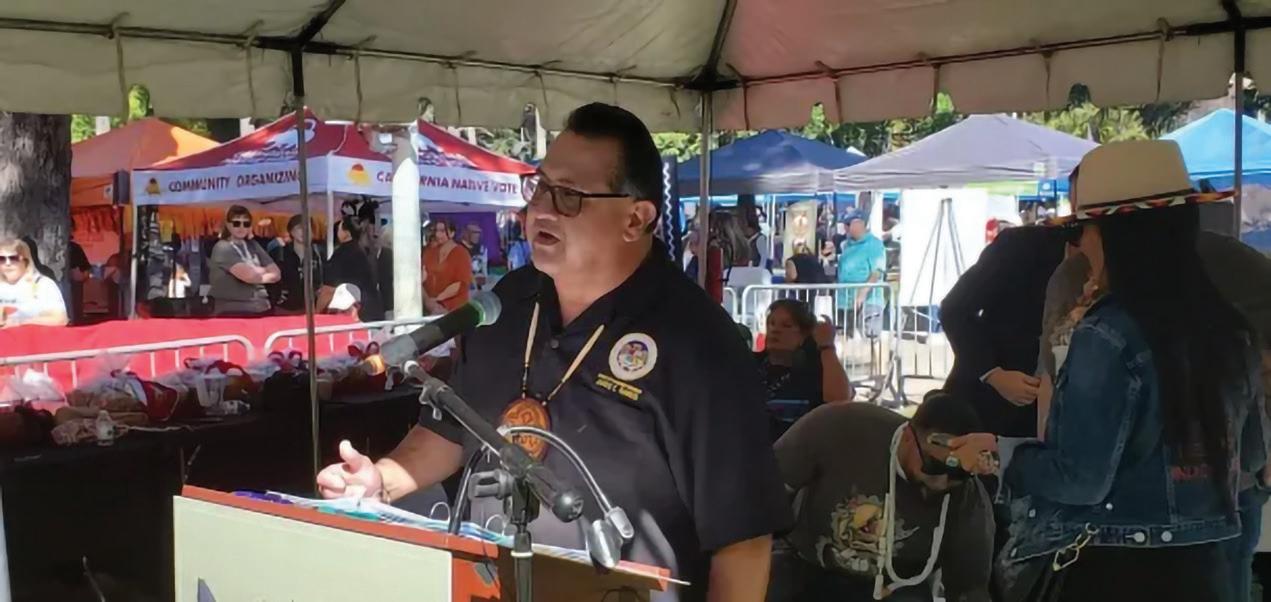
the
their own safety, and 41% had been physically harmed from physical violence by intimate partners, stalked, and sexually assaulted.
Underreporting, racial misclassification, bias, and lack of resources to follow through and properly close cases are also obstacles when working on MMIP cases. The DOJ will now have the assets to address those issues.
“For the first time in California, law enforcement agencies will be required to collect data on crimes occurring on Indian lands and report that information to my office,” Attorney General Rob Bonta stated. “(AB 2695) will help all of us develop data-driven
strategies to end the MMIP crisis in our state and improve justice for tribal citizens.”
As part of the CLNAC’s priority package, Newsom signed into law Assembly Bill 2795 authored by Assemblymember Joaquin Arambula (D-Fresno). Ramos is the co-author of the legislation.
AB 2795 lowers administrative barriers to CalWORKS and Temporary Assistance for Needy Families (TANF) services at Indian health clinics in the state. Currently, the law authorizes California to fund clinics that provide substance abuse and mental health treatment services.
Despite the law, reporting and reimbursement requirements
have made the funds almost unreachable to these clinics.
“It is vital that we ensure members of tribal communities have equitable access to safety net programs when needed,” Arambula stated.
The day of the signing of the bills by CLNAC, Newsom proclaimed Native American Day, a decree that commemorates 100 years ago when Native Americans were conferred citizenship in the United States and the right to vote in California. Native Americans have dealt with generational hate and policies that resulted in the taking of their land and resources. Native American Day is a moment of reckoning, the
proclamation declares.
“This important milestone is not without controversy –Congress’ act was in furtherance of assimilationist policy during a period marked by the forced removal of Native children from their families, the seizure and sale of Native lands, and prohibitions on languages Native people spoke since time immemorial,” the Newsom’s decree stated.
“This California Native American Day, I encourage all Californians to learn more about the ways California Native peoples throughout the state are cultivating a new generation of leaders and empowering their communities to build a
sustainable future for all.”
Native American Day began in California in 1939, when Gov. Culbert Olson dedicated October 1 as “Indian Day.”
In 1968, California Tribal Leaders and Gov. Ronald Reagan rebranded the fourth Friday of September as “California Indian Day.” The celebration was renamed “Native American Day” in 2015 under the Jerry Brown Administration. Facilitated by the Native American Heritage Commission and the California Tribal Chairperson Association, the 2024 version of the event attracted hundreds of people for a full day of activities. It was a great opportunity for all to celebrate the rich history, culture of California Tribes, and its first people.
To further the acknowledgment of California Native Americans, Newsom signed Ramos’ AB 1821, a bill that requires California public schools teach the history of the impact on California Native Americans during Spanish Mission and Gold Rush eras. Tony Thurmond, State Superintendent of Public Instructions, co-sponsored AB 1821.
“This legislation will help ensure curriculum on California’s Spanish Mission and Gold Rush eras accurately captures the treatment and impact of Native Americans during these significant eras in state history,” Thurmond stated. “This initiative supports California’s diverse students to be seen, heard, and understood in their instructional materials, and to foster a deeper appreciation for our Native communities’ history and cultures.”
This resource is supported in whole or in part by funding provided by the State of California, administered by the California State Library in partnership with the California Department of Social Services and the California Commission on Asian and Pacific Islander American Affairs as part of the Stop the Hate program. To report a hate incident or hate crime and get support, go to CA vs Hate.
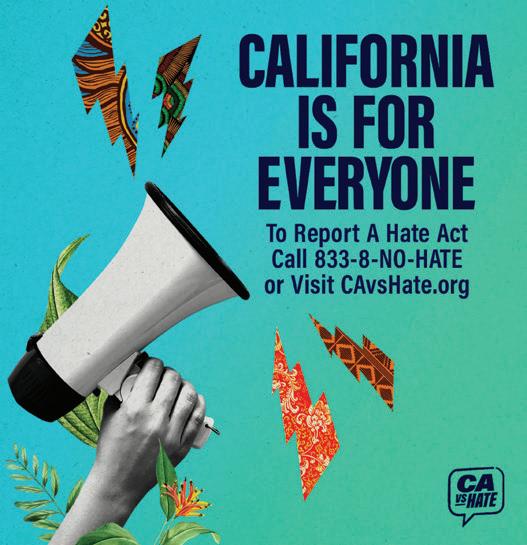
San Bernardino Unified's Norton Elementary School Earned California Green Ribbon School Award
Community/Education
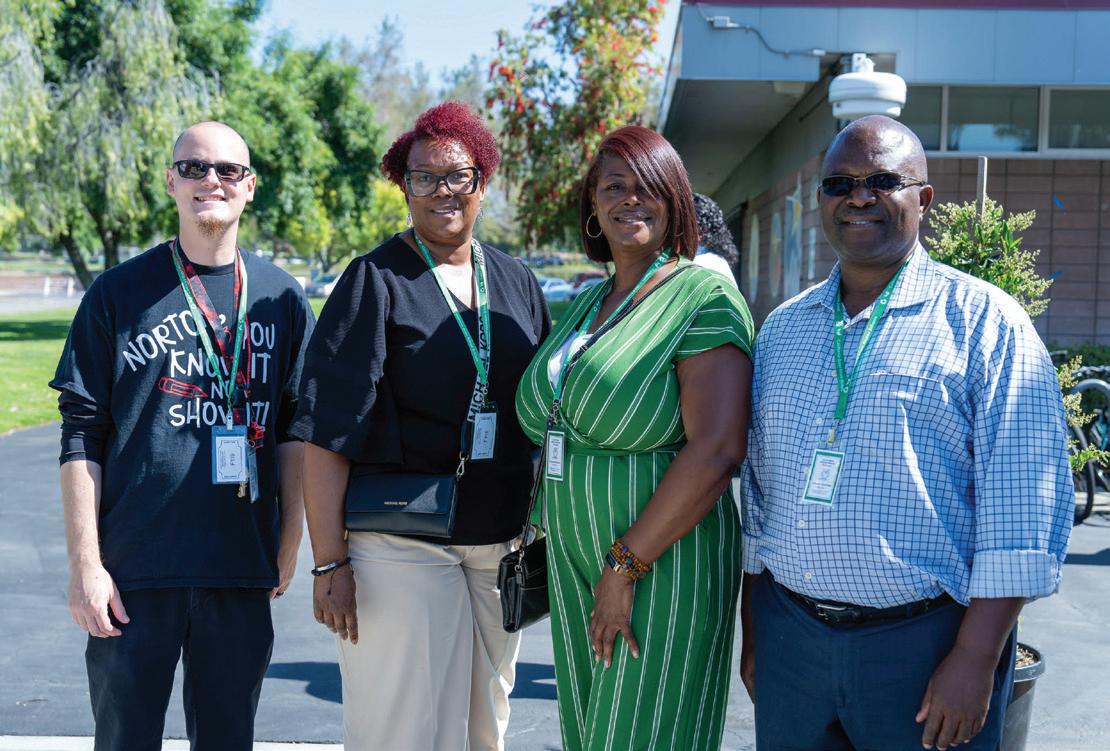
SAN BERNARDINO, CA—
Captain Leland F. Norton Elementary School, part of the San Bernardino City Unified School District (SBCUSD), has been honored by the California Department of Education (CDE) with a Silver 2024 California Green Ribbon School Award.
The California Green Ribbon Schools (CA-GRS) Award recognizes California K–12 public schools that have demonstrated progress in reaching the U.S. Department of Education’s Green Ribbon Schools Pillars, which include:
Reducing environmental impact and costs
Improving the health and wellness of schools, students and staff
Providing effective environmental education that incorporates STEM (Science, Technology, Engineering and Mathematics), civic skills and green career pathways
According to the CDE, Norton was honored for its
sustainable landscaping, a vegetable garden that students use for taste tests and cooking to promote healthy eating and its Clean Air Program for Elementary Students (CAPES), which educates students about air quality, the impact of pollution and actionable steps for environmental improvement.
“Since it opened, Norton has been a proud STEM school with a focus on the four Cs of Collaboration, Creativity, Communication and Critical Thinking,” said Norton Principal Elizabeth Cochrane-Benoit.
“It just made sense to include environmental education and project-based learning that will help our scholars to be better stewards of the natural world and of their own personal health and wellness.”
Schools that earn a California Green Ribbon School Award are recognized in one of four categories: Bronze, Silver, Gold or Green Achiever. Green Achiever schools are nominated for the U.S. Department of Education’s Green Ribbon Schools Award.
Why More Families Are Choosing Online Learning: The Rise of Virtual Pre-K
Niyoka McCoy, Ed.D.

If you catch a glimpse of 4and 5-year-olds in attendance of a virtual pre-k classroom, you may witness a chorus of enthusiastic voices singing “The Wheels on the Bus,” with hands energetically following the motions of their teacher. These young learners represent a rapidly growing trend of parents opting out of the traditional classroom setting in favor of online learning environments, where engaging teachers, family involvement, and interactive resources create a captivating learning experience. While both online and traditional pre-k programs share similarities—such as state-certified teachers leading classes and opportunities for peer interaction—virtual learning offers unique advantages. Teachers are specially trained for online instruction and excel in “edutainment,” a high-energy, engaging teaching approach that captures the young students’ attention through the screen. Moreover, students benefit from frequent one-to-one instruction, including dedicated sessions focused on key literacy skills such as letter recognition and
Thursday, October 10, 2024
Why More Families Are Choosing Online Learning: The Rise of Virtual Pre-K...continued
diversity, letter and number recognition, and self-confidence.
While pre-k is not mandatory in any state, studies show that children who attend a structured learning environment before kindergarten gain a significant academic advantage. Researchers point out that pre-k attendance builds foundational knowledge in subjects such as math and reading, as well as fine motor skills, which enhance long-term academic performance, including higher assessment scores and stronger math abilities, providing benefits that extend into adulthood.
Virtual pre-k programs offer a lifeline to families who want their children to experience the benefits of a structured pre-k program but face barriers to traditional programs. These obstacles can include lengthy waitlists, lottery systems, high tuition and fees, or long commutes. Moreover, families must navigate challenges like potty training requirements, lack
of facilities designed for small children, and crippling separation anxiety that can make the daily drop-off traumatic and upsetting for the child and parent.
No child should miss out on the benefits of pre-k due to lack of access. Virtual pre-k presents a modern solution to families, ensuring equitable access to a high-quality curriculum for all, regardless of location or income. The flexibility and accessibility of virtual pre-k allow all children the opportunity to thrive in a structured learning environment.
I expect more families will continue to embrace virtual school options that prioritize their child’s development and growth.
Niyoka McCoy is the Chief Learning Officer at Stride. She leads the development and implementation of the company’s learning strategy, curriculum, and instruction, with an Ed.D. in Curriculum and Instruction and over 16 years of experience in the education sector.
Op-Ed Submission: Concerned About Democracy in 2024? Your School Board Could Hold the Key
By Ethan Ashley
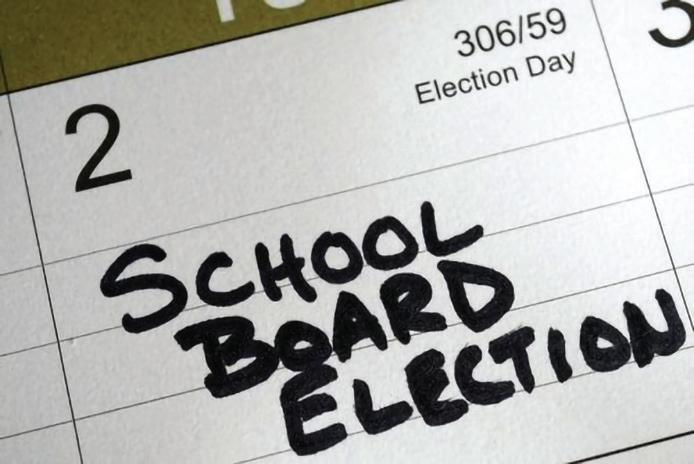

Education has always been a contentious issue, but as we approach the 2024 elections, it’s become ground zero for broader cultural and political clashes. Book bans targeting diverse and inclusive materials are on the rise, and restrictive gag orders are silencing classroom discussions on critical topics like race, gender, and American history. With the conservative agenda of Project 2025 gaining traction, the threat to both democracy and public education has never been more urgent. In times like these, it’s easy to feel powerless—but, as citizens, we can’t afford to disengage. The fight for our country’s future begins at the local level, particularly with our school boards
learning to form specific sounds through mouth movements.
Virtual programs also strike a balance between desk time and hands-on activities away from the screen. For example, a science lesson involves a project where students and their families build birdhouses to create an ecosystem that protects birds. This activity, used as part of a K12-powered pre-k program often draws in older siblings, and families share that their children love watching the birds visit their creations, making it a true family favorite. We frequently hear that these hands-on activities bring entire families together, transforming learning into a shared experience at home.
During classroom sessions, teachers take frequent brain breaks—a strategy that incorporates interactive tools to help keep 4- and 5-year-olds focused and engaged. Take “Doggyland” for instance—this lively animated series gets kids moving through song and dance, with music that covers various educational topics like sharing,
Though often overlooked, school boards are the backbone of our democratic process, influencing the education of nearly 90% of America’s children who attend public schools. Their decisions determine everything from which books make it into classrooms to the curriculum that teaches civics and voter education. They are the gatekeepers of academic freedom and have a crucial role in shaping young people’s understanding of democracy. School boards are responsible for dismantling the remnants of systemic racism in education and laying the foundation for future citizens who will either uphold or dismantle democratic values. That’s why who sits on our school boards is so critical. Diverse representation on these boards ensures a variety of perspectives, particularly when it comes to identifying inequities and implementing inclusive policies. However, school boards in the U.S. were designed in a different era, for a different demographic. Historically led by white, male landowners, school boards have not evolved to reflect the diversity of the communities they now serve. Today, although public school students are more than 55% students of color, a 2022 survey by School Board Partners found that 64% of school board members are white, highlighting a significant gap in representation.
This May celebrated the 70th
Community Leaders Honored at LWVSB Citizens of Achievement & Civic Engagement Ceremony
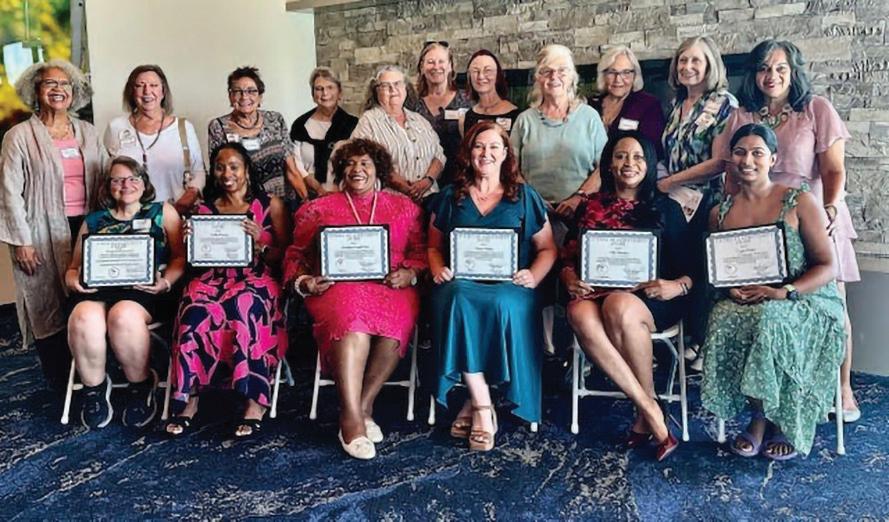
On a beautiful afternoon on Sunday, October 6, 2024, at the Sterling Natural Resource Center in San Bernardino among over 130 guests witnessed Stacey Barnier, Niki Dettman, Geraldine “Gerri” Foxall-Kater, Nefertiti Long, and Tansu Phillip receive the Citizens of Achievement Award and American Association of University Women (AAUW) of Redlands receive the Civic Engagement Award at the League of Women Voters, San Bernardino Area 49th Citizens of Achievement and Civic Engagement Awards Ceremony. To learn more about the League of Women Voters of San Bernardino, please visit: San Bernardino Area | MyLO (lwv.org)
State Superintendent Tony Thurmond Announces 2025 California Teachers of the Year
SACRAMENTO—State
teachers to enter the profession.
anniversary of the U.S. Supreme Court decision in Brown v. Board of Education, the decision that outlawed segregation based on race in public schools. At the time of the ruling, roughly 90% of students were white. Since then, public school demographics in America have continued to morph into being more racially and ethnically diverse: less than half of students are white, meaning that about 55% of public school students identify as minority populations, with more than a quarter being Hispanic, and nearly 15% being Black. These numbers don’t even account for non-English native language speakers, students with disabilities, students identifying as part of the LGBTQ community, or students in varying socioeconomic backgrounds. Across the country this fall, people will go to the polls and cast votes that will have a major impact on the future of our country. With over 21 thousand seats up for election this year, SBP is among the groups working to ensure voters realize the importance of school board elections specifically. The reality is that the tensions we’re witnessing around education will continue to compound — but we have the collective power to choose a better future by electing a more diverse candidate pool who will advocate for policies and procedures that meet the needs of students, no matter their background. By nature and design, school boards were established by the people, for the people. It’s time to bring our school boards into the present and deliver on that founding promise. The future of democracy depends on it.
Ethan Ashley is the Co-CEO & Cofounder of School Board Partners, an organization that connects emerging, inspired elected community leaders serving on local school boards with the training, support, and mentorship needed to successfully push for high quality school systems.
For additional information, visit: https://schoolboardpartners. org.
Superintendent of Public Instruction Tony Thurmond today named five exceptional educators as the 2025 California Teachers of the Year. These educators are ambassadors of the profession and serve as representatives of the state for the calendar year. Superintendent Thurmond, who began his career as a social services worker, said he is pleased to recognize the five outstanding teachers who have had a tremendous impact in their schools, students, and communities.
Superintendent Thurmond praised the five outstanding educators named 2025 California Teachers of the Year, highlighting their dedication, innovation, and hard work. "These remarkable teachers have a lasting impact on their students, equipping them with the skills needed for success. They serve as an inspiration and exemplify the exceptional work happening in California schools,” he said.
Presented by the California Department of Education (CDE) and supported by the California Teachers of the Year Foundation, the California Teachers of the Year Program began in 1972 to honor outstanding teachers and encourage and inspire new
2025 California Teachers of the Year
Matthew Winheim, a middle school STEM Aviation and Mathematics teacher at Space Aeronautics Gateway to Exploration Magnet Academy in the Palmdale Unified School District (Los Angeles County).
Superintendent Thurmond nominated Winheim as California’s representative for the National Teacher of the Year competition. Winheim will compete against other state nominees, and the 2025 National Teacher of the Year will be announced in the spring.
Kristen LoPrell, a high school Mathematics and AP Calculus teacher at Grossmont High School in the Grossmont Union High School District (San Diego County).
Robert Mauger, a high school Career and Technical Education Transportation Automotive teacher at Corona High School in the Corona-Norco Unified School District (Riverside
New Filing: Trump’s Attempts to Overturn 2020 Election Were Part of Private Scheme, Not Official Acts
NNPA NEWSWIRE — The filing reveals the extent of Trump’s interactions with figures such as attorney Rudy Giuliani and other senior officials, some of whose names were withheld. Trump persisted with a plan to undercut Joe Biden’s victory despite numerous warnings from people in his circle that his claims of a stolen election were untrue.
By Stacy M.
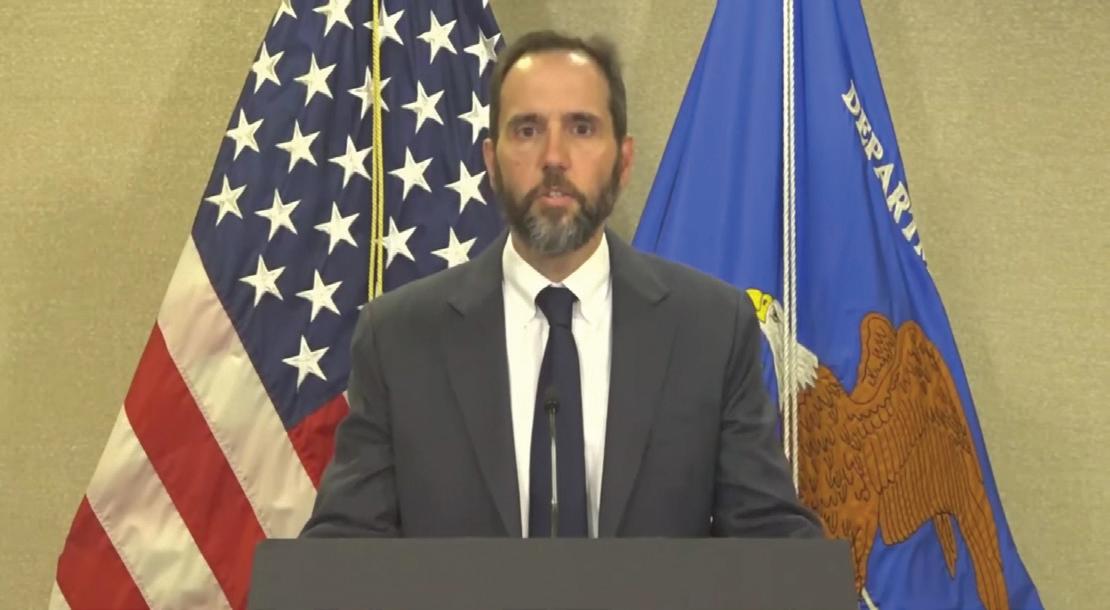
Special Counsel Jack Smith has delivered a powerful legal blow to former President Donald Trump, unveiling new evidence that the twice-impeached Trump’s efforts to overturn the 2020 election results were part of a private scheme rather than actions taken in his official capacity as president.
In a 165-page legal brief unsealed Wednesday, Smith provided new details about Trump’s behind-the-scenes maneuvers to subvert the election, including pressure campaigns targeting key officials, attempts to create false electors, and private discussions with his vice president, Mike Pence.
The filing reveals the extent of Trump’s interactions with figures such as attorney Rudy Giuliani and other senior officials, some of whose names were withheld. Trump persisted with a plan to undercut Joe Biden’s victory despite numerous warnings from people in his circle that his claims of a stolen election were untrue.
Smith’s brief is part of a broader strategy to prove that Trump can face trial for his actions, even after a Supreme Court ruling granted him immunity for official acts as president. The special counsel argues that Trump’s efforts to enlist Pence in blocking Congress’s certification of the election results were part of a private, illegal campaign to retain power, not part of his official duties.
“At its core, the defendant’s scheme was a private criminal effort,” Smith wrote in the filing.
“In his capacity as a candidate, he used deceit to target every stage of the electoral process.”
The document provides new evidence of Trump’s attempts to sway election officials in critical swing states to alter the results in his favor. The brief quotes a lawyer advising Trump, who gave an “honest assessment” that
his claims of widespread fraud would not withstand scrutiny in court. Yet, Trump dismissed the warning. “The details don’t matter,” Trump said, according to the filing.
Further, the brief recounts private conversations between Trump and Pence, in which Pence urged Trump to accept defeat and consider another run in 2024. Trump, however, expressed reluctance, saying, “2024 is so far off.”
Smith’s filing depicts Trump’s actions as part of a desperate and illegal campaign to remain in power after losing the 2020 election. The brief also points to Trump’s reliance on Giuliani and other private allies in his election subversion attempts, asserting that none of these efforts fell under the scope of presidential duties.
“The defendant asserts that he is immune from prosecution for his criminal scheme to overturn the 2020 presidential election because, he claims, it entailed official conduct,” the filing reads. “Not so. Although the defendant was the incumbent president during the charged conspiracies, his scheme was fundamentally a private one.”
A sealed appendix to the legal brief contains FBI interviews, search warrant affidavits, and grand jury testimony that might soon become public. Smith’s filing builds on the indictment released last year, expanding the evidence and reinforcing the argument that Trump’s conduct was criminal and not shielded by presidential immunity.
Smith concluded the brief with an explicit request to the court: “The government respectfully submits that the defendant’s conduct described in this motion is not subject to presidential immunity and that he should face trial for his private acts of subversion.”
Gov. Newsom Approves Key Legislation Backed by Black Caucus in 2024 Session
Joe W. Bowers Jr. | California Black Media
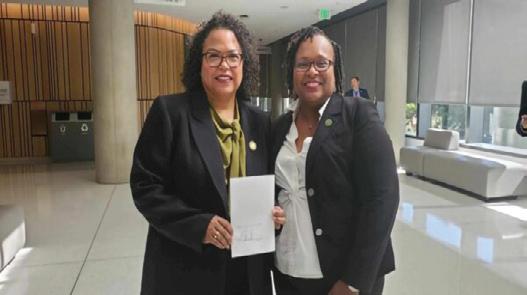
and
signed several CLBC bills into law.
Photo by Antonio Ray Harvey, California Black Media (CBM).
(CBM) – In 2024, the 12-member California Legislative Black Caucus (CLBC), introduced nearly 600 bills aimed at improving the lives of all Californians, many with a particular focus on addressing
Gov. Newsom Approves Key Legislation Backed by Black Caucus in 2024 Session...continued
CLBC vice-chair Sen. Steven Bradford (D- Inglewood) designates California BlackServing Institutions (BSIs), a groundbreaking effort to provide additional resources and support to higher education institutions that primarily serve Black students. This bill will help ensure that Black students have access to culturally relevant and equitable educational opportunities.
Assembly Bill (AB)-51 byAssemblymember Mia Bonta (D-Oakland)makes sure that Black families from lowincome communities have access to critical early childhood education.
AB-1113 by Assemblymember Kevin McCarty (D–Sacramento) expands the California Longitudinal Pupil Achievement Data System (CALPADS) to include data on expanded learning opportunity programs. This bill improves the state’s ability to track student outcomes and offer targeted support to underrepresented students, including Black students, addressing systemic inequities in the education system.
Health and Human Services: Improving Health Outcomes for Black Californians
AB-2319 by CLBC chair Assemblymember Lori Wilson (D– Suisun City) mandates implicit bias training for healthcare providers, addressing disparities in maternal and infant health outcomes, especially affecting Black women.
AB-3059 byAssemblymember Akilah Weber (D–La Mesa) requires commercial health plans to cover medically necessary pasteurized donor human milk for infants in neonatal intensive care units (NICUs). This bill also simplifies the process for hospitals to distribute donor milk by removing the need for a tissue bank license, ensuring that families, particularly in Black communities where infant mortality rates are disproportionately high, have access to life-saving nutrition for their newborn.
Tackling the Job Security
Job security is a critical issue for Black Californians, and the CLBC introduced several bills addressing these challenges.
SB-1089 by Senator Lola Smallwood-Cuevas (D–Los Angeles)requires grocery stores and pharmacies to provide advance notice to workers and the community before closures, addressing the issue of food deserts and limited access to essential services in vulnerable communities.
AB-647 byAssemblymember Chris Holden (D–Pasadena) strengthens grocery worker protections by preventing mass layoffs and ensuring that trained and skilled grocery store and pharmacy workers are rehired. This bill supports job security for workers in essential sectors and helps maintain consistency in food safety and pharmaceutical access in their communities.
continued on page 7
Three Former Memphis Officers Convicted in Tyre Nichols’ Fatal Beating
NNPA NEWSWIRE — The beating of Nichols reignited debates over the use of excessive force by law enforcement, particularly in Black communities. The five officers involved, all of whom are Black, were fired shortly after the incident, but the trial showcased the troubling dynamics of police violence regardless of race.
by
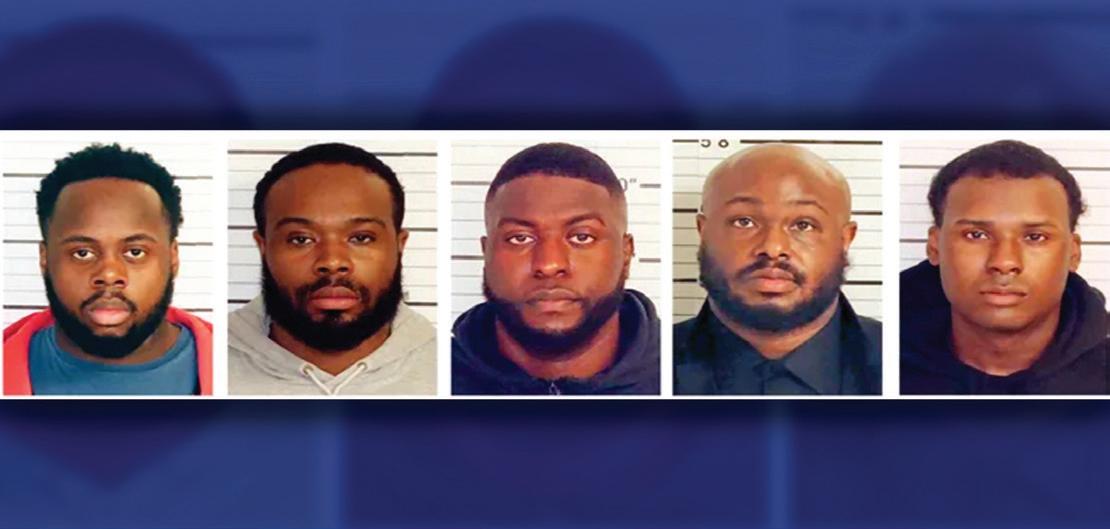
convicted
inequities faced by Black citizens. Of these bills, Gov. Gavin Newsom signed 230 into law and vetoed 50. The remaining bills either failed to pass out of committee, were rejected in one of the chambers, or were withdrawn by their authors for possible re-introduction later.
CLBC’s legislative victories reflect their commitment to creating a more equitable California for Black residents across areas like education, healthcare, housing, and criminal justice reform. The following are some of the key bills taking effect on Jan. 1, 2025.
Education Reform for Black Students Senate Bill (SB) -1348 by
A jury on Thursday found three former Memphis police officers guilty in the 2023 fatal beating of Tyre Nichols. Tadarrius Bean, Demetrius Haley, and Justin Smith were convicted of witness tampering in the case that fueled nationwide protests and renewed calls for police reform. Still, the jury acquitted Bean and Smith of federal civil rights violations. Haley was convicted of violating Nichols’ civil rights by causing bodily injury, though he was acquitted of the more serious charge of causing death.
The verdict came after jurors deliberated for six hours, carefully considering the violent encounter captured on police bodycam footage. Nichols, a 29-year-old Black man, was beaten just steps from his home following a traffic stop, as officers repeatedly struck him while he cried out for his mother. Nichols died three days later in the hospital.
The courtroom remained silent as the verdicts were read, and the judge ordered the officers to be taken into custody. A hearing on Monday will determine whether they will be released pending sentencing. Witness tampering
Three Former Memphis Officers Convicted in Tyre Nichols’ Fatal Beating...continued prison, said through tears, “I made his child fatherless.”
The beating of Nichols reignited debates over the use of excessive force by law enforcement, particularly in Black communities. The five officers involved, all of whom are Black, were fired shortly after the incident, but the trial showcased the troubling dynamics of police violence regardless of race.
While the witness tampering convictions bring a degree of accountability, the civil rights acquittals for Bean and Smith may leave some questions unanswered for those seeking broader justice. Nichols’ family, however, said they view the guilty verdicts as a step toward closure in a case that has haunted them since the tragic night of January 7, 2023.
carries a possible sentence of up to 20 years in prison.
Rodney Wells, Nichols’ stepfather, spoke to reporters after the verdict, saying, “A win is a win. They’re all going to jail,” expressing some measure of relief for his family.
The trial highlighted the actions of the former officers, who were part of the nowdisbanded SCORPION crime suppression unit. Prosecutors argued that Nichols was subjected to a “street tax” for fleeing the scene of a traffic stop, a practice where officers use excessive force as punishment.
The officers then lied to their superiors, paramedics, and in official reports to cover up the severity of the assault.
Desmond Mills, another former officer involved in the beating who took a plea deal, delivered emotional testimony during the trial, expressing deep regret for his role in the attack. Mills admitted to going along with a cover-up, hoping Nichols would survive and the incident would “blow over.” Mills, who could face up to 15 years in
COMMENTARY:
Carrying on the Deplorable Hollywood Tradition of ‘Whitewashing’
NNPA NEWSWIRE — Former NBA star and activist Craig Hodges is locked in a new dispute over a documentary on his life with Hollywood executives and producers. The former Chicago Bull, who helped the franchise win two of their six championships in the 1990s and was a vocal advocate for Black rights, is currently battling over the rights to his book “Long Shot: The Triumphs and Struggles of an NBA Freedom Fighter” with Wayfarer Studios, the production company run by actor Justin Baldoni and billionaire Steve Sarowitz.
By Ricky Clemons
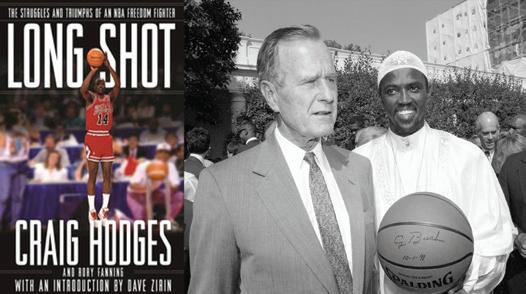
“Long Shot: The Triumphs and Struggles of an NBA Freedom Fighter,” by Craig Hodges. President George H. W. Bush welcomes members of the NBA Champion Chicago Bulls, including Craig Hodges, to the White House, 01 Oct 1991. Photo: George Bush Presidential Library and Museum.
It is no secret that the American film industry has a long and volatile history on racial issues. From fostering racist tropes and stereotypes, to underrepresenting minorities — both in front of and behind the lens — to whitewashing historical events in films from “The Birth of a Nation” to “Green Book,” Hollywood has always struggled to appropriately portray the Black experience in the United States.
This is why it should not surprise anyone to hear that former NBA star and activist Craig Hodges is locked in a new dispute over a documentary on his life with Hollywood executives and producers. The former Chicago Bull, who helped the franchise win two of their six championships in the 1990s and was a vocal advocate for Black rights, is currently battling over the rights to his book “Long Shot: The Triumphs and Struggles of an NBA Freedom Fighter” with Wayfarer Studios, the production company run by actor Justin Baldoni and billionaire Steve Sarowitz.
While the details are dense, the matter can be boiled down to the fact that a Black man is once again fighting to tell his own story in the way that he sees fit. Hodges – who I will remind you is the subject of the documentary – wants British-Indian producer Jivi Singh to tell his story, but Baldoni and Wayfarer allegedly wanted another director to make Hodges’ story more “palatable” for the NBA.
That is where the trouble begins. Differences of this kind are typical of Hollywood – but they are also typical of the historical Hollywood experience for Black people overall and the story of Hodges’ own life. Remember, Hodges has long felt that the NBA blackballed him for his political activism and willingness to criticize his teammates for perceived inactivity on social issues. Even
losing his livelihood did not cause him to back down from his principles, so Hodges surely expected that the executives at the production company that wanted to document his story would not hide behind identity politics as it softened its core messages.
The implications of Hodges’ dispute with Wayfarer are indicative of a larger, systemic issue in the film industry. It reflects broader patterns of exploitation that have historically plagued Hollywood. Similar instances can be found across the industry, where Black artists are often sidelined, or their contributions diminished. Media moguls play a significant role in perpetuating these issues, with power dynamics that prioritize profit over authenticity.
As Craig Detweiler, professor of film history at Pepperdine University, said in 2015, “There are a shortage of African American, Asian and Latino stars. For all Hollywood’s progressive politics, its casting decisions look remarkably retrograde.”
It’s not just casting, however, as Hodges’ dispute with Wayfarer clearly indicates. From producing to directing to deciding on creative vision to upholding a project’s ultimate vision, Black and brown people in Hollywood are consistently being overruled and written out of the process –with implications for us all, as who shapes and guides stories can fundamentally alter the end results and the way important stories are told.
Moving forward, it’s crucial to advocate for equitable partnerships within the media landscape. This includes reforming contracts to ensure fair representation and creative control for Black artists, especially when it comes to their own stories. Supporting Black creatives and their stories is essential for fostering a more inclusive and honest portrayal of their experiences.
Finally, the struggle of Craig Hodges against Wayfarer Studios is a reminder that the long history of exploitation continues to demand our attention. To effect meaningful change, readers and industry stakeholders must advocate for systemic reform and commit to supporting authentic narratives created by Black artists.
Ricky Clemons is an adjunct lecturer teaching sports management and media at Howard University.
Thursday, October 10,
IN MEMORIAM: Emily “Cissy”
Houston, 91
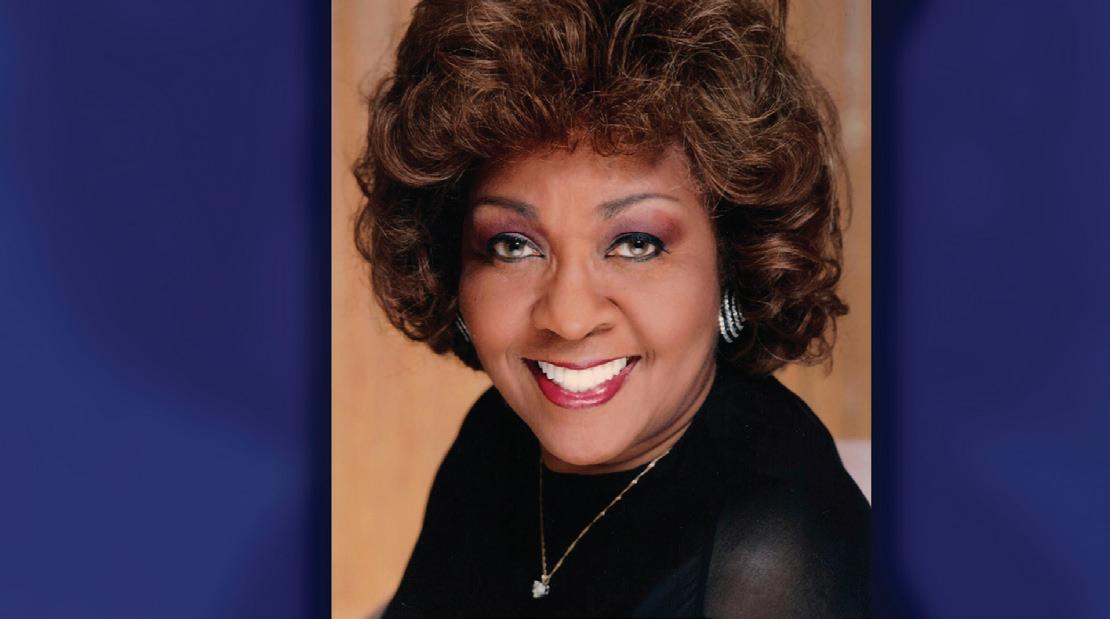
In our time of deep sorrow, we announce the passing of Emily “Cissy” Houston, who transitioned today, Monday, October 7, at 10:30 a.m. ET, at her home in Newark, New Jersey, while under hospice care for Alzheimer’s disease. Houston, who recently turned 91 years old on September 30, 2024, was surrounded by her family.
“Our hearts are filled with pain and sadness. We lost the matriarch of our family,” says Pat Houston, the daughter-in-law of Cissy Houston. “Mother Cissy has been a strong and towering figure in our lives. A woman of deep faith and conviction, who cared greatly about family, ministry, and community. Her more than seven-decade career
What Diet Is Most Likely to Help Ease Crohn’s Disease?... continued
adopting one of these strategies, that really, I think, is valuable."
Diet isn't a substitute for medication, but more of an adjunct, Dr. Elie Abemayor, chief of the division of gastroenterology at Northern Westchester Hospital in Mount Kisco, N.Y. says.
The two diets both try to reduce inflammation, but the Mediterranean diet is more palatable, he adds.
in music and entertainment will remain at the forefront of our hearts. Her contributions to popular music and culture are unparalleled. We are blessed and grateful that God allowed her to spend so many years with us and we are thankful for all the many valuable life lessons that she taught us. May she rest in peace, alongside her daughter, Whitney and granddaughter Bobbi Kristina and other cherished family members.”
On behalf of The Houston Family, we are touched by your generous support, and your outpouring of love during our profound time of grief. We respectfully request our privacy during this difficult time.
What Diet Is Most Likely to Help Ease Crohn’s Disease?

People who have Crohn's disease often seek to ease their symptoms by changing what they eat, and new research suggests the Mediterranean diet may be their best bet. Although Blacks may have a lower risk of developing an inflammatory bowel disease (IBD), they still have a significant risk, according to John Hopkins Medicine.
The study evaluated one of the commonly used diets for Crohn's disease, known as the specific carbohydrate diet (SCD), comparing it with the Mediterranean diet, which is sometimes recommended by doctors for its heart health benefits, but not for inflammatory bowel diseases like Crohn's.
The scientists found that both diets reduced symptoms almost equally, but the study concludes that the greater ease of following the Mediterranean diet might make it one that patients prefer to follow.
"Physicians are seeing patients who are on increasingly restrictive diets," study co-author Dr. Arun Swaminath says.
The downside of these tightly controlled eating regimens is that patients may not be getting enough calories or nutritional variety, he says. An easier-tofollow diet may help with that.
"It's the idea of helping my patients avoid a pathway of increasingly restrictive foods for them to feel like they're being healthy enough to control the underlying problem. If I can keep them away from that dark pathway, I feel like I've done something good," Swaminath says.
Crohn's disease involves the immune system and is characterized by abdominal symptoms, such as pain and diarrhea, and chronic inflammation, according to the U.S. Centers for Disease Control and Prevention. Together with ulcerative colitis (another inflammatory bowel disease), it affects about 3 million people in the United States.
The study was conducted
in 33 sites across the United States between September 2017 and October 2019. The study included 191 patients who were randomly assigned to one of the two diets, following it for 12 weeks. The participants received prepared food for the first six weeks.
The diets affected their symptoms, and at 12 weeks about 42.4 percent had symptomatic remission with SCD and 40.2 percent with the Mediterranean diet, according to the report.
The SCD includes unprocessed meats, fresh fruits and nonstarchy vegetables. It restricts certain legumes, all grains, certain sweeteners, canned fruits and vegetables, and certain dairy products. The Mediterranean diet is low in red and processed meats and features fresh fruits and vegetables, nuts, fish, lean meats, whole grains, small amounts of dairy and uses olive oil as its primary source of fat.
Diet isn't the only line of defense against Crohn's disease. For more than 20 years, since the first biologic medication was approved, there has been a blossoming of different medical therapies, Swaminath adds. Prior to that, existing medications including steroids and immune modulators were repurposed to treat the disease.
"While admittedly, we haven't cured everybody or gotten everyone into a medicineinduced remission, we can help most people get to essentially a normal quality of life," Swaminath says.
Still, some people want an alternative to immunosuppressive therapy, according to the study, and high-quality data on diets for Crohn's disease is lacking.
Swaminath shares that the people who were included in the study had mild to moderate disease. If someone is really sick and already malnourished, most physicians would not put them into a diet strategy, he adds.
"What that means is, despite being on therapy, clearly they're on the therapy because it's working and they were better than they were before, but they still have symptoms that weren't cured," Swaminath says. "And if we can get half of those patients better by changing their diet or
When a patient is having more significant active inflammation, there's some belief that following a less inflammatory diet over the short term helps people and possibly lowers the likelihood of the patient progressing to a more significant inflammatory condition and disease, Abemayor says.
"I think that, in the short term, it is beneficial. I think longerterm, whether keeping people on Mediterranean diets or putting them on the SCD diet, I don't think that the jury's in on that yet, but I think probably in terms of general health it's probably a better diet for everybody to be on a Mediterranean-type diet," Abemayor suggests.
Some research is investigating whether the gut microbiome may play a role, Abemayor says, and whether people are more likely to respond to different kinds of treatment depending on their microbiome.
"I think that's where a lot of these treatments for gastrointestinal conditions are going to be headed, to stratify people based on genetics, based on maybe their microbiome, based on other kinds of things which separate one group from another," Abemayor says.
What foods should you eat?
If you are interested in starting the Mediterranean diet, check with your doctor to make sure it is safe for your condition. If this diet is deemed safe, you can try this plan, which can be adjusted to meet your specific needs and preferences.
Do:
Eat: Vegetables, fruits, nuts, seeds, legumes, potatoes, whole grains, breads, herbs, spices, fish, seafood and extra virgin olive oil.
Eat in moderation: Poultry, eggs, cheese and yogurt.
Eat only rarely: Red meat.
Don't
You should avoid these foods:
Added sugar: Soda, candies, ice cream, table sugar and many others.
Refined grains: White bread, pasta made with refined wheat, etc.
Trans fats: Found in margarine and various processed foods.
Refined oils: Soybean oil, canola oil, cottonseed oil and others.
Processed meat: Processed sausages, hot dogs, etc.
Highly processed foods: Anything labeled “low-fat” or “diet” or which looks like it was made in a factory.
Make sure to read labels carefully to avoid any foods that may include ingredients not listed in this diet.
It is recommended that you eat fish and seafood at least twice a week. You should use water as your go-to beverage. You may also drink coffee and tea and one glass of wine a day. You should avoid fruit juices that are high in sugar.
San Manuel Band of Mission Indians Provides $500,000 Grant for Highland Senior Center Renovation
Every Room Upgraded in Now ADA Compliant 100-Year-Old Structure
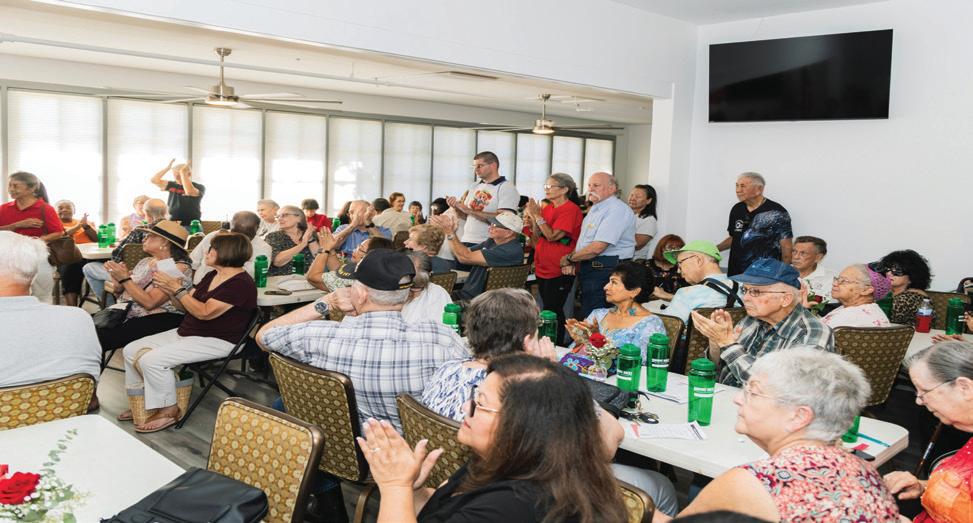
WHO/WHAT:
The San Manuel Band of Mission Indians has provided a $500,000 grant to the Highland Senior Center, allowing the organization to renovate and meet the needs of more than 10,000 seniors who visit the facility monthly. Some parts of the building are nearly 100 years old and sorely needed upgrades. Tribal and local city officials were present to celebrate the center’s grand reopening Saturday, Oct. 5, at 11 a.m.
Every room in the center has been renovated including flooring, paint and other general upgrades, including the kitchen and bathroom facilities. Now the restrooms meet ADA requirements, and the center’s kitchen was also upgraded with new appliances so now hot meals can be served. This capability will allow the Highland Senior Center to apply for additional
grants to plan, prepare and deliver meals to homebound seniors, as well as other senior centers in the community.
The center also upgraded its AC system, making the senior center a proper cooling center during inclement weather.
The center offers daily programming for seniors, including physical fitness classes, meals, and opportunities to socialize through various activities and classes. Seniors also have access to the center’s food pantry, which is hosted twice a week.
DATE/TIME: Saturday, Oct. 5, 2024 11 a.m.
WHERE: Highland Senior Center 3102 Highland Ave. Highland, CA 92346
WITNESS FOR JUSTICE Issue #1224
Intergenerational Relationships—Our Secret Superpower
Brooks Berndt
Earlier in the year, I had a call with Liam McMahon, the Civic Engagement Director for a highly effective advocacy organization in Minnesota called ISAIAH. As McMahon explained his approach
A good voter turnout strategy leverages this asset. One might say it’s our secret superpower.
I have been able to witness this superpower at work in the United Church of Christ’s Vote for Climate Hope campaign. I have seen church members draw upon relationships within their congregations when encouraging others to vote their values on election day by having them take the Climate Hope Voter Pledge. I have also seen the unique power of intergenerational relationships within these same congregations.
Over this past summer, a team of young adults spoke at churches across the country about the Vote for Climate Hope campaign, and the most common feedback I received from both the young adults and the churches was how connecting across the generations gave hope to both the young and the old alike. The young adults did not feel so alone in their struggles as the older generation engaged them with gratitude and commitment. At the same time, those of the older generations felt energized by the passion of the bright and gifted younger generation.
As we approach the upcoming election, there is a powerful potential role to be played by intergenerational relationships— whether that entails conversations between generations about plans to vote or different generations actually heading to the polls together on election day.
A range of articles and studies can be found online related to the influence of intergenerational relationships on voting. One study
found “evidence of significant trickle-down (mother-to-child) and trickle-up (child-to-mother) relationships in civic education and engagement.” Not only are civically engaged parents who vote more likely to have children who do likewise as adults, but there is also evidence that the reverse can happen as adult children influence their parents. Additionally, an organization called Kids Voting USA found that communities that use their curriculum to foster “lifelong voting habits in children” witnessed a spillover effect as voter turnout among adults increased by as much as five percent. Ready to make the most of intergenerational relationships this election season? On a practical level, organizations like Girl Scouts provide tips for taking one’s child with you to vote on election day, while organizations like the YMCA provide tips for navigating political differences within families.
In the next month, start to think about how you can leverage one of your greatest assets in making a difference. What conversations can be had? What plans can be made? Our values can come to life in meaningful ways when we connect with those close to us. Make the most of your secret superpower in the days and weeks ahead!
ABOUT THE AUTHOR
The Rev. Dr. Brooks Berndt is the Environmental Justice Minister for the United Church of Christ and the author of Cathedral on Fire: A Church Handbook for the Climate Crisis.
“Biblical Truth!”
By Lou K. Coleman

Hell is real, and the miseries of Hell are unending [Jude 13; Rev. 20:10]. Hell, a place of outer darkness, and eternal weeping and gnashing of teeth. A place of eternal damnation. A place where God’s wrath is poured out. A place of everlasting destruction. A place where people scream for mercy, have memories, are tormented and cannot escape. [Matthew 8:12; Mark 9:48; Luke 16:23-31; Mark 3: 29; 2 Thessalonians 1: 9; Revelation 9:2; Revelation 14:10].
And this is not some weird prophet seeing a vision of the afterlife; this is Jesus Himself speaking plainly about what Hell is like. That why Jesus says, if your hand causes you to sin, cut if off. For it is better for you to enter life crippled, than with two hands and go to Hell, to the unquenchable fire. [Mark 9:43]. And make no mistake about it, those who choose not to accept God’s gift of salvation will go to Hell. [John 15:6]. Biblical Truth! I tell you, our lives are finite, and we do not know how much time we have. Delaying the decision to accept Christ is just down right foolishness. [Matthew 25:41]. For the Bible clearly and explicitly teaches that Hell is a real place to which the wicked/unbelievers are sent after death. Accepting Christ not only secures our eternal future but also brings blessings and a renewed relationship with Him in this life.
As [Dr. Benjamin E. Mays] said so eloquently, “I have only just a minute, only sixty seconds in it. Forced upon me, can’t refuse it. Didn’t seek it, didn’t choose it, but it’s up to me to use it. I MUST SUFFER if I lose it. Give account if I abuse it. Just a tiny little minute, but eternity is in it.” Heaven or Hell.
to voter turnout efforts, he made the observation that one of the greatest assets that each of us has is our relationships with others.
O sinner man! Consider the fearful danger you are in. It is a great furnace of wrath, a wide and bottomless pit, full of the fire of wrath that you are held over in the hand of God, whose wrath is provoked and incensed as much against you, as against many of the damned in Hell. You hang by
a slender thread, with the flames of divine wrath flashing about it, and ready every moment to singe it, and burn it apart; and you have no interest in any Mediator, and nothing to lay hold of to save yourself, nothing to keep off the flames of wrath, nothing of your own, nothing that you ever have done, nothing that you can do, to induce God to spare you one moment more [Jonathan Edwards – Sinners in the Hands of an Angry God].
Consider that the Son of Man will send his angels, and they will separate the evil from the righteous and throw them into the fiery furnace. In that place there will be weeping and gnashing of teeth [Matthew 13:41–42, 49–50].
Then he will say to those on his left, ‘Depart from me, you cursed, into the eternal fire prepared for the devil and his angels. And these will go away into eternal punishment, but the righteous into eternal life [Matthew 25:41, 46].
Sinner man [unbelieving man], where would you go if you were to die this very moment? Are you sure you would go to heaven? I tell you, “As the world turns from day to day, as we live, we have to make decisions and when we make those decisions, things don’t always turn out the way we’d like them to or want them to no matter what we feel or what seems real, things change. We don’t have a crystal ball to look into to know what our future is going to be. Gone are the days that seem so many years away. Whatever we had, we had [Songwriters: Barry White, Michael Lovesmith].
Oh, sinner man, unbelieving man, don’t wait until it’s too late! The Time is Near! The Lord is not slow in keeping His promise, as some understand slowness. He is patient with you, not wanting anyone to perish, but everyone to come to repentance. Repent before it is too late and get under the umbrella of the Almighty God, NOW! For Jesus will send his angels, and they will separate the evil from the righteous and throw them into the fiery furnace. In that place where there will be weeping and gnashing of teeth [Matthew 25:41, 46].
Remember, the Lord is not slow in keeping His promise, as some understand slowness. He is patient with you, not wanting anyone to perish, but everyone to come to repentance. Don’t delay, the Time is Near! Biblical Truth!
New Report Exposes Tax System’s Role in Widening Racial Wealth Gap, Calls for Urgent Reforms
By Stacy M. Brown, NNPA Newswire Senior National Correspondent

Color of Change, the nation’s largest online racial justice organization, and Americans for Tax Fairness released a damning report Thursday exposing the deep racial inequities entrenched in the U.S. tax system. The issue brief “How Tax Fairness Can Promote Racial Equity,” written by Color of Change Managing Director Portia Allen-Kyle and Americans for Tax Fairness
Executive Director David Kass, exposes the systemic flaws in tax policy that have widened the racial wealth gap and prevented economic mobility for Black, brown, and Indigenous communities.
The report urgently calls for sweeping reforms to stop the flow of tax benefits to the wealthiest Americans — who are overwhelmingly white — while offering concrete solutions to make the tax code work for everyone, not just the top 1%.
“An equitable tax system does two things,” Allen-Kyle asserted. “It narrows the racial wealth gap from the bottom up and spurs economic mobility for Black, brown, and Indigenous individuals and families. Our current tax code fails on both accounts. It’s a prime example of how so-called ‘colorblind’ systems actively prevent Black families from building generational wealth and economic security.”
Tax Code Deepens Racial Disparities, Experts Say
Thursday, October 10, 2024
After the deluge, the lies: Misinformation and hoaxes about Helene cloud the recovery...continued
falsely claimed that FEMA had run out of money because all of it had gone to programs for undocumented immigrants.
The racial wealth gap has exploded in recent years, with the median wealth gap between Black and white households jumping from $172,000 in 2019 to over $214,000 in 2022. Economic crises such as the Great Recession and the COVID-19 pandemic further entrenched these divides, benefiting the already wealthy, while leaving Black, brown and Indigenous communities further behind.
The Racial Wealth Gap and Homeownership
Homeownership, long touted as a primary means of building wealth in America, has failed to deliver for Black families. The report points to factors such as biased home appraisals and a regressive property tax system as key reasons why Black homeowners have been unable to accumulate wealth at the same rate as their white counterparts.
As the brief notes, with critical provisions of the Tax Cuts and Jobs Act (TCJA) set to expire, now is a pivotal moment for tax reform.
“We have a once-in-a-generation opportunity to reform our tax system to address racial inequality,” the report states, comparing recent
The brief pulls no punches in describing how current tax policies disproportionately benefit wealthy white families, further deepening racial inequalities. By giving preferential treatment to wealth over work, the system locks in economic advantages for white households while leaving communities of color to bear the brunt of these inequities. “Our tax system is not only failing to address racial wealth inequality, it’s exacerbating it,” Kass warns in the report. “We privilege wealth over work, fail to adequately tax our richest households and corporations, and allow inherited fortunes to compound unchecked by taxation. This perpetuates a legacy of racial inequality.”
continued in last 2 columns
After the deluge, the lies: Misinformation and hoaxes about Helene cloud the recovery
Trump, allies fueling unfounded partisan fears
By David Klepper The Associated Press
WASHINGTON (AP) — The facts emerging from Hurricane Helene’s destruction are heartrending: Businesses and homes destroyed, whole communities nearly wiped out, hundreds of lives lost, hundreds of people missing. Yet this devastation and despair is not enough for the extremist groups, disinformation agents, hucksters and politicians who are exploiting the disaster to spread false claims and conspiracy theories about it and the government’s response.
According to former President Donald Trump, the federal government is intentionally withholding aid to Republican disaster victims. Far-right extremist groups warn on social media that officials plan to bulldoze affected communities and seize the land from residents. A tale straight from science fiction asserts that Washington used weather control technology to steer Helene toward Republican voters in order to tilt the presidential election toward Democratic nominee Kamala Harris.
The claims, according to experts and local officials dealing with disaster response, say less about the reality of the widespread damage from Helene than they do about America’s fractured politics and the fear and distrust shadowing an election year marked by assassination attempts and escalating global tension.
Debunking conspiracy theories takes time away from recovery efforts
As rescue work continues and authorities try to separate fact from fiction, the conspiracy theories are not helping.
Elected leaders from both parties have had to set the record straight and urge people not to give into fear and rumor.
“If everyone could maybe please put aside the hate for a bit and pitch in to help, that would be great,” posted Glenn Jacobs, the retired professional wrestler known as Kane, who is now the Republican mayor of Knox County, Tennessee. Jacobs’ post was intended to rebut
of Hurricane Helene Confirm The Federal Government is Purposely Blocking Rescuers and Stealing Aid In an Attempt to Keep Deep Red Areas From Voting,” Jones posted Oct. 3 on X.
Disinformation campaigns by China and Russia amplify the misleading claims
State-run media and disinformation campaigns run by China and Russia have amplified false and misleading claims about the response to the storm. Both countries have used social media and state news stories to criticize responses to past U.S. natural disasters, part of a larger effort to stoke division and distrust among Americans.
State and local officials from both parties have condemned the conspiracy theories as rumors, saying the focus should be on recovery, not political division and hearsay.
Responding to the hoaxes is taking up time that should go toward assisting victims, said North Carolina state Sen. Kevin Corbin, a Republican who urged his constituents not to give into hoaxes.
“Friends can I ask a small favor?” Corbin posted Oct. 3 on Facebook. “Will you all help STOP this conspiracy theory junk that is floating all over Facebook and the internet… Please don’t let these crazy stories consume you.”
After Robinson, the GOP candidate for North Carolina governor, posted that state officials had not prepared for the storm, a spokesman for the governor accused Robinson of mounting “an online disinformation campaign.” North Carolina officials say the response to Helene is the largest in state history, including thousands of members of the National Guard and other recovery workers, millions of meals, dozens of aircraft and more than 1,000 chainsaws.
Trump has tried to tie the hurricane’s aftermath to immigration, a leading issue of his campaign. He
The agency’s funding for disaster aid is stretched, but that is because of the many parts of the country dealing with the effects of hurricanes, wildfires and other calamities. Disaster aid is funded separately from other Department of Homeland Security programs that support immigration-related spending.
Far-out tales of space lasers, fake snow and weather control technology
Bizarre stories proposing that the government used weather control technology to aim the hurricane at Republican voters quickly racked up millions of views on X and other platforms.
Rep. Marjorie Taylor Greene, R-Ga., endorsed the idea, posting Oct. 2 on X: “Yes they can control the weather. It’s ridiculous for anyone to lie and say it can’t be done.”
Far-out tales of space lasers, fake snow and weather control technology — sometimes tinged with antisemitism — have spread after recent natural disasters, including a snowstorm in Texas and last year’s wildfire in Maui.
Experts who study conspiracy theories say big events like disasters — or the Sept. 11 attacks or the COVID-19 pandemic — create perfect conditions for conspiracy theories to spread because large numbers of anxious people are eager to find explanations for shocking events.
Responding to the volume of false claims about Helene, the Red Cross urged people to consult trustworthy sources of information and to think twice before reposting conspiracy theories.
“Sharing rumors online without first vetting the source and verifying facts ultimately hurts people — people who have just lost their homes, neighborhoods, and, in some cases, loved ones,” the organization wrote in a public plea.
Gov. Newsom Approves Key Legislation Backed by Black Caucus in 2024 Session...continued from page 3
Environmental Justice for Black Neighborhoods
rumors that workers from the Federal Emergency Management Agency were seizing relief supplies from private citizens.
Many of the conspiracy theories focus on hard-hit North Carolina, a state key to winning the White House. Rumors circulated that FEMA was raiding storm donations and withholding body bags, forcing local hospitals to stack the bodies of victims. One claim suggested federal authorities would condemn the entire town of Chimney Rock and prohibit resettlement in order to commandeer a valuable lithium mine nearby.
False claims of blocked relief flights and aid withheld from Republicans
Elon Musk, the owner of Tesla, X and SpaceX, posted that private relief flights to North Carolina were being blocked by the Federal Aviation Administration, a claim dismissed as false by Transportation Secretary Pete Buttigieg.
Despite the tradition of Democrats and Republicans putting aside politics for disaster response, many conspiracy theories suggest Democrats such as President Joe Biden or North Carolina Gov. Roy Cooper are intentionally withholding aid from Republicans. Trump has pushed the claim, as has North Carolina’s lieutenant governor, Mark Robinson, the embattled GOP nominee for governor.
“They’re being treated very badly in the Republican areas,” Trump told Fox News, ignoring reports and photo and video evidence of recovery efforts underway throughout the region. “They’re not getting water, they’re not getting anything.” Conspiracy theorist Alex Jones endorsed Trump’s fact-free allegation. Jones, the founder of InfoWars, popularized the idea that the Sandy Hook Elementary School shooting in Connecticut that killed 20 children in 2012 was faked. “Exclusive: Victims
Bonta’sAB-2851 mandates air quality monitoring near metal shredding facilities, protecting the health of Black communities often located near industrial areas from harmful pollutants.
Bradford’sSB-1130 prevents low-income Black families from being left out of the Family Electric Rate Assistance (FERA) program, which helps subsidize electricity costs. It would also require the state’s three largest investor-owned utilities to report on enrollment of customers in the FERA program.
Criminal Justice and Civil Rights Advocacy
Criminal justice reform remains a top priority for the CLBC given the overrepresentation of Black individuals in California’s criminal justice system. AB-1986 by Assemblymember Issac Bryan (D–Ladera Heights) bans certain books in state prisons, addressing concerns over materials that perpetuate racial stereotypes and divisive ideologies.
AB-3089 by Assemblymember Reggie Jones-Sawyer (D–South Los Angeles)issues a formal apology for California’s role in chattel slavery, calls for systemic reforms and reparative justice for Black Californians. This bill was a key component of the CLBC’s reparations package.
AB-2975 byAssemblymember Mike Gipson (D–Compton) known as the Secure Hospitals for All Act, focuses on increasing hospital safety by requiring the installation of weapon detection systems at key entrances, such as those for Labor and Delivery and Emergency Departments. The bill aims to reduce workplace violence in hospitals, which disproportionately affects healthcare workers, including
Wildlife Connectivity Report Reveals California’s Bold Approach to Reconnect Animal Habitats Along State Highway System
Caltrans & Department of Fish and Wildlife Working Together to Alleviate Migration Barriers for California Wildlife
National /World News
Sacramento – Wildlife making their habitat in the Golden State’s biodiverse environment are getting a helping hand from Caltrans and the California Department of Fish and Wildlife (CDFW). California is implementing a strategy to address wildlife connectivity barriers across the state’s vast transportation network. The effort aligns with Governor Gavin Newsom’s vision to lead the world in protecting and restoring biodiversity.
“Caltrans is seeking opportunities to better integrate our highway system with the State’s diverse natural environment,” said Caltrans Director Tony Tavares. “It is our responsibility to improve passageways for wildlife that live and migrate along our shared ecosystem, and remediation efforts highlighted in this report will help honor our goal to provide a world class transportation system that serves all people and respects the environment.”
Caltrans developed the Wildlife Connectivity Report, which identified more than 140 locations across the state with opportunities to improve wildlife connectivity. Species such as the Sierra Nevada yellow-legged frog, the desert big horn sheep and the San Joaquin kit fox are often barred or restricted from their natural migration patterns because roads and fences interrupt their surroundings.
“Habitat connectivity is one of the most critical issues we’re confronting in the 21st
many from Black communities AB-672 byAssemblymember Corey Jackson (D – Moreno Valley)would ensure that Black Californians and other underrepresented communities are able to alert authorities in a timely way regarding alleged violations of civil rights. This bill enhances the state’s civil rights enforcement capability and provides service and support to affected constituents.
Economic Justice and Worker Rights
Economic justice is still a pressing issue especially as Black Californians continue to face higher unemployment rates and economic disparities. Bradford’sSB-1177 ensures that minority-owned businesses, including Black-owned businesses, are prioritized for public utility contracts, helping to create more economic opportunities for Black entrepreneurs.
AB-1 byAssemblymember Tina McKinnor (D-Inglewood) strengthens collective bargaining rights for workers in the California Legislature, protects Black employees, and ensures they are given equal opportunities to advocate for fair treatment and wages.
A Continued Fight for Equity
The 230 CLBC bills signed into law represent tangible progress in education, healthcare, housing, environmental justice, and criminal justice reform.
As the CLBC looks ahead to the next legislative session, Black Californians can expect continued advocacy on the issues that matter most to their communities, with a clear focus on equity, social justice, and economic empowerment.
century to maintain California’s biodiversity and healthy fish and wildlife populations,” said CDFW Director Charlton H. Bonham. “We have to find ways for fish and wildlife to move safely across the landscape – to prevent inbreeding and increase genetic diversity, to escape poor habitat burned by wildfire or parched by a warming climate, to prevent vehicle collisions on busy roadways. That’s why we are excited to partner with Caltrans to help provide solutions and create the opportunity for wildlife to move safely.”
Numerous proposed projects are designed to remediate fish and wildlife barriers and help approximately 180 native, endangered or threatened animal species to move more freely and have better access to their natural habitats. Caltrans is looking to construct dozens of migration corridors adjacent to state highways and interstates. They include a new bridge overcrossing along State Route 97 in Siskiyou County, a new bridge on Interstate 15 in San Bernadino County and an enlarged culvert underneath Interstate 10 in Los Angeles County. The highly touted Wallis Annenberg Wildlife Crossing over U.S. 101 in Southern California is expected to be completed in 2026. For more information on the state’s efforts to improve wildlife connectivity, view the Fish and Wildlife Connectivity page or visit the Terrestrial Habitat Connectivity page.
New Report Exposes Tax System’s Role in Widening Racial Wealth Gap, Calls for Urgent Reforms...continued
monumental legislation like the Bipartisan Infrastructure Law and the Inflation Reduction Act.
Three Key Reforms to Tackle Racial Inequity
The report lays out three central reforms aimed at curbing the wealth concentration among the ultra-rich and dismantling the racial inequities baked into the tax code:
Taxing Wealth Fairly: The report calls for equalizing the tax rates on wealth and work. Currently, capital gains — profits from investments — are taxed at a far lower rate than wages earned by working people, a disparity that overwhelmingly benefits white households. The vast majority of capital gains income flows to white families, who comprise only two-thirds of taxpayers but receive 92% of the benefits from lower tax rates on investment income.
Strengthening the Estate Tax: The estate tax, which is supposed to curb the accumulation of dynastic wealth, has been weakened over time, allowing large fortunes — primarily held by white families — to grow even larger across generations. The report calls for stronger enforcement of the estate tax to prevent the further entrenchment of wealth and power within a small, overwhelmingly white elite.
Targeting Tax Deductions to Benefit Lower-Income Households: Deductions for mortgage interest, college savings, and retirement accounts disproportionately benefit wealthier, predominantly white households. In order to prevent lower-income and minority households from falling behind due to policies that are currently biased in favor of the wealthy, the brief advocates for restructuring these deductions.
Biden-Harris Administration and Senate Proposals for Change Both the Biden-Harris administration and Senate Finance Committee Chairman Ron Wyden have proposed addressing the racial wealth gap. The Billionaire Minimum Income Tax (BMIT) and the Billionaire
Income Tax (BIT) would ensure that the wealthiest Americans — who often go years without paying taxes — contribute their fair share. These proposals would raise over $500 billion in revenue over the next decade, which could be reinvested in healthcare, education, and housing for communities of color. As the report points out, our current tax system is skewed in favor of the ultrawealthy. It allows the rich to avoid paying taxes on the increased value of their investments unless they sell them. They often borrow against these growing fortunes, further delaying taxation, which allows white billionaires to accumulate vast wealth while paying a fraction of what working families pay in taxes.
Defending IRS Funding to Hold the Wealthy Accountable
The report
Immigration Misinformation Targets Decisive
U.S. Latino Vote
By Selen Ozturk
If not countered, misinformation targeting immigrants and Latinos will be make-orbreak this election year.
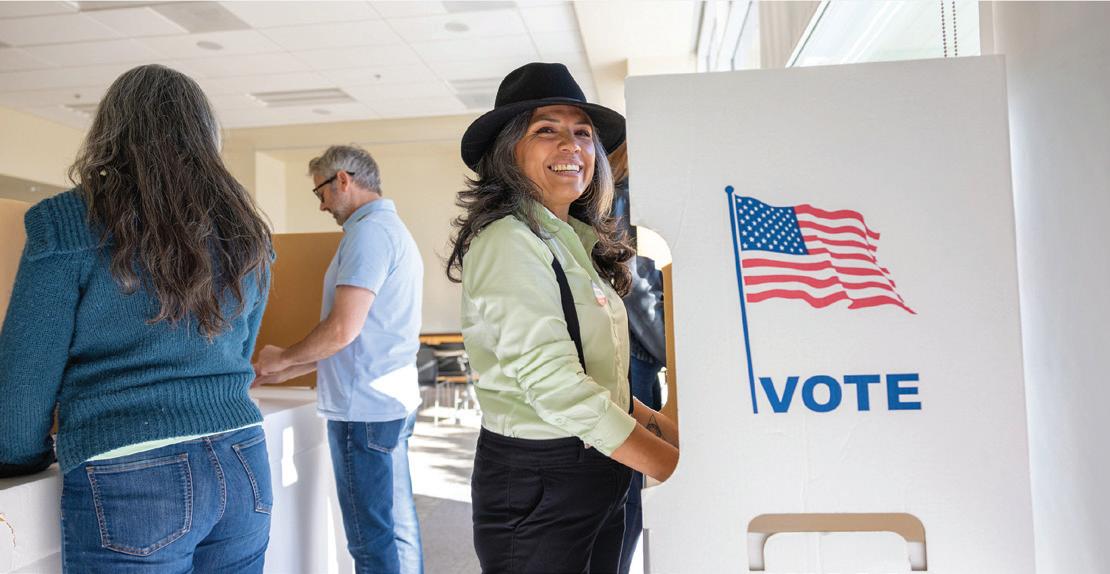
If not countered, misinformation targeting immigrants and Latinos will be make-or-break this election year.
Although the political use of immigration as a scapegoat for hate is nothing new, the Latino vote — the largest-growing U.S. voter demographic, with currently 36.2 million Latinos representing 15% of all eligible voters — able to decide elections in large states like California, Texas and Florida, and swing states like Nevada, Arizona, Georgia, Wisconsin and North Carolina.
At a Thursday, September 26 panel held by CALÓ News and the Latino Media Collaborative, ethnic media leaders explained the trending misinformation tactics used to undermine electoral trust among Latinos, and discussed ways to fight this misinformation.
‘Undermining the voice of a decisive vote’
“Millions of immigrants are living quietly in harmony with native-born residents. We’re neighbors, co-workers and friends, and we’re caring for each other across racial, ethnic and
bipartisan lines — yet we rarely see those stories on the front page,” said Jessica González, co-CEO of Free Press.
“Instead, we see stories that exploit and demonize immigrants. We see the lie that non-citizen immigrants are voting in droves, fabrications about Haitian immigrants, false claims such as that the U.S. election will be extended this year,” she continued. “The intent is to scare voters of color from the polls, to pander to anti-immigrant sentiment by stirring up fear … and to legitimize authoritarian power-grabs by sowing distrust in our electoral process.”
A 2024 Free Press poll of 3,000 Americans found that 79% were “concerned that the information they see online is fake, false or a deliberate attempt to confuse people,” while 76% were concerned about 2024 presidential election misinformation.
“I became politically active organizing 10,000 students to march out of LAUSD schools during the ’90s in California’s Prop 187 era,” said Jennie Carreón, principal of public affairs firm Carreón Group.
“It’s hard to believe that it passed. It denied undocumented immigrants access to public education and social services, and it also required police to report and verify the immigration status of all individuals.”
“Thankfully, Prop 187 was struck down by the courts, but 30 years later, here we are hearing the same anti-immigration stories, but this time it’s at a national level,” she added. “Latino voter misinformation is undermining the voice of a decisive vote in 2024 … and we need to show its impact in a digestible way, so that a generation of new voters doesn’t feel so apprehensive.”
Trending misinformation
“These messages with the purpose of creating hate and fear are no longer just about undocumented immigrants. We’re now seeing attacks on legal immigrants — such as DACA and other legal pathway programs, and recently the Springfield, Ohio Haitian community, most of whom had Temporary Protected Status,” said Vanessa Cárdenas, executive director of America’s Voice.
In tracking media coverage of immigration reform, America’s Voice found two common ideas behind these attacks, she explained, the first being a “replacement theory … that immigrants are here to replace ‘real’ Americans and ineligible immigrants are going to vote in our election, seeding doubt as to whether we can trust the outcome.”

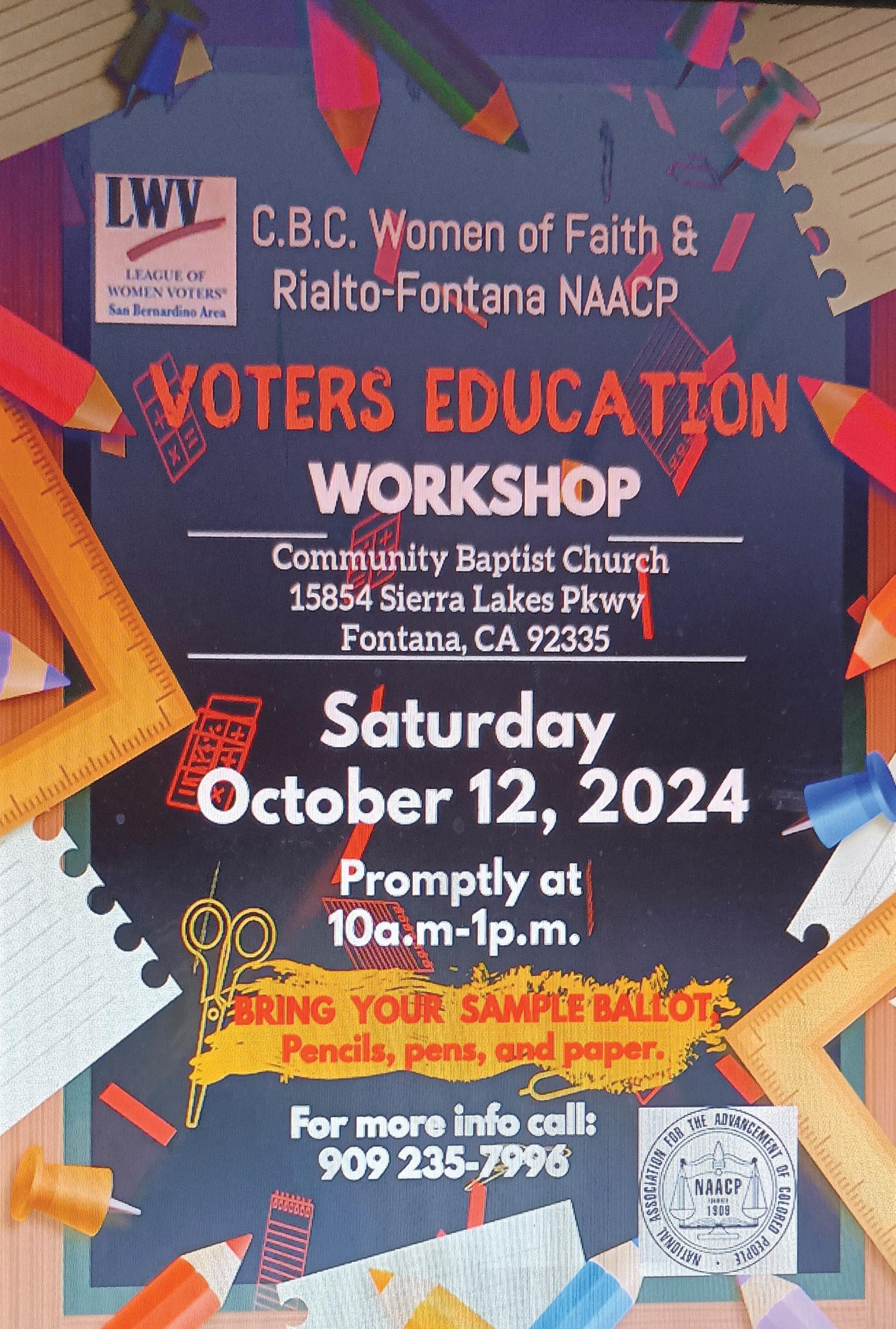
State-led investigations by Republican and Democratic officials, news organizations, law enforcement and universities have found that noncitizen voting is extraordinarily rare.
For instance, a 2016 Brennan Center survey of 44 election administrators overseeing 23.5 million votes across 42 states saw 30 incidents of suspected noncitizen voting — or .0001% of all votes.
A state-led audit of 1.1 million ballots in Nevada that same year identified three noncitizens who had voted, amounting to .0003% of all votes.
A 2020 state investigation in Ohio referred 104 cases of alleged noncitizen voter registration and 13 cases of alleged noncitizen voting for prosecution; because the latter would amount to .00016% of all votes, Ohio’s own secretary of state said “voter fraud is exceedingly rare.”
The second idea behind trending misinformation “pits Latinos who’ve been in the U.S. for generations against new migrants … through a notion of scarcity, crime and racial tensions, particularly in communities in blue cities, like New York, where migrants were sent from Texas,” Cárdenas explained. “These narratives are setting the stage for the idea that it is okay to deport people en masse because these folks are not desirable, not American.”
Economists estimate that a mass deportation of undocumented immigrants, of the kind proposed by Donald Trump’s 2024 presidential campaign, would entail economic losses between $711 billion and $1.7 trillion, at 2023 levels.
Given a removal of 11 million people, this would entail a shrinking of the U.S. economy between 2.6% and 6%.
“The reason why so many undocumented immigrants are coming to the U.S. is because the U.S. has destabilized their economy and governments,” added Anshantia Oso, senior director of Black history project Media 2070. “U.S. foreign policy is a pull factor for immigrants to come to the U.S., and our political candidates are manipulating ideas of scarcity to keep the
population scared and divided.”
Fighting misinformation
“In having conversation with folks who may be repeating this misinformation, it’s important to understand what their concerns actually are,” Oso continued.
“Often, political rhetoric plays on valid concerns around housing, jobs or finances … and it’s not about being anti-immigrant, but having a government that’s actually going to work for us. We need to speak to those concerns and point towards actual solutions.”
A demographically representative Harvard Kennedy School poll found that 49% of Americans were exposed to some form of misinformation intervention, like social media fact-checking.
However, these interventions triggered significantly polarized responses between Democrats, who supported the intervention overall, and Republicans, who opposed content evaluation on the grounds that it was biased.
“One approach to countering disinformation is not getting bogged down in tackling specific claims, but rather exposing their motives of division,” said Roberta Braga, founder and executive director of Digital Democracy Institute of the Americas (DDIA).
“We don’t have to correct the record on every single thing we see. Instead, we should focus on changing the conversation by telling real stories about the impact of deportation policies,” she continued, “and by telling stories about what a functional migration system would look like by telling immigrant success stories.”
“The issue is that fighting misinformation doesn’t work the
same way for everyone,” said Braga. “Someone who believes one in 15 lies may need a fact check, but someone who believes 14 out of 15 lies, that’s not what they’ll respond to. Beyond content-oriented factors, we need to consider the real day-to-day concerns that people have.”
A June 2024 DDIA poll found that most Latinos targeted by misinformation don’t outright believe it. Among the 3,000 Latino adults polled, 62% were either unsure of, or rejected, media misinformation claims. Although the DDIA findings, like the Harvard Kennedy School poll, saw consistent correlation of Republican party affiliation with “lower levels of trust and confidence that one’s vote will count,” low trust in the system wasn’t correlated with voter turnout for Latinos.
In other words, many Latinos less likely to perceive their vote to matter would still vote despite this ambivalence.
“There’s a large group of Latino voters out there that are undecided or ambivalent, and I think that’s where we should be spending most of our time sharing our information and ideas,” Cárdenas said. “These are people that we could really move to our side.”
This resource is supported in whole or in part by funding provided by the State of California, administered by the California State Library in partnership with the California Department of Social Services and the California Commission on Asian and Pacific Islander American Affairs as part of the Stop the Hate program. To report a hate incident or hate crime and get support, go to CA vs Hate.
